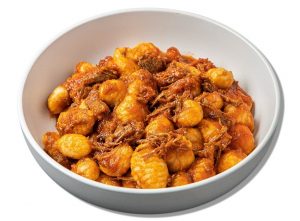Pharma packaging is becoming increasingly important in the world today. As the aging population increases, more medicines are being produced for the global market. As a result, the demand for pharmaceutical packaging is also expected to rise, fueling the growth of the pharmaceutical industry. Here are some key facts about the pharmaceutical packaging market. The World Health Organization projects that the number of geriatrics will double between 2015 and 2050.
 Materials used
Materials used
Developed economies primarily drive the global pharmaceutical packaging market. In addition, the oral segment is projected to dominate the market. Oral drug delivery is a convenient and efficient method of drug administration. Therefore, developing advanced production processes is critical to the market’s growth. Emerging economies also present a significant growth opportunity.
The pharmaceutical packaging industry has become highly sophisticated, requiring specialised manufacturing processes. As a result, manufacturers are now using green packaging methods to minimise environmental impact. For example, biodegradable materials such as cornstarch, paper, and cardboard replace conventional packaging products. These alternatives promote sustainability throughout the entire life cycle of a pharmaceutical product.
Challenges
Pharmaceutical packaging is critical for the safe transport and storage of medications. These fragile products must be protected from heat and moisture to keep them fresh and safe. They also need to meet quality control standards. Fortunately, there are many options for protecting medications. Many pharmaceutical packaging solutions have various features that ensure proper storage and transport.
First, the packaging materials must be compatible with the chemicals in the products. A pharmaceutical package must be leak-proof and compact to keep its properties intact. A pharmaceutical packaging company must have extensive knowledge about materials and experience to make packaging solutions that meet the industry’s strict requirements.
Trends
In recent years, pharmaceutical packaging has undergone various changes and improvements. These improvements have resulted in improved product safety and patient convenience. Many of these innovations have also been made to be more sustainable—for instance, new trends in pharmaceutical packaging focus on minimising plastic usage and increasing recycling. Single-use plastic poses a special challenge for the medical industry.
Regions
Pharmaceutical packaging is important in protecting a pharmaceutical product from contamination and contact with the external environment. It also helps maintain the quality of the finished product. The growing demand for biologics and biosimilars is expected to drive revenue growth in this segment. For instance, Sepha, a pharmaceutical packaging company from Northern Ireland, recently launched its EZ Blister+ blister packaging machine. It uses a combination of forming, sealing, and cutting techniques to produce packs of the same quality as those of larger blister packaging lines.
The pharmaceutical industry is growing at a rapid pace in developed and developing economies. It is attributed to increasing healthcare awareness and the adoption of new technologies. Rising public and private healthcare expenditures are also contributing to growth. Additionally, the development of emerging treatments is expected to spur the pharmaceutical industry.
Size
The size of the pharmaceutical packaging market is determined by various factors, including the product type, the type of packaging, and the end-user. Depending on the end-user, the market is segmented by types and applications. The report also identifies the key players and their company profiles. It also examines the current and future trends in the industry.
The report includes information about the size and growth prospects of the Pharmaceutical Packaging market in various regions. The report provides detailed information about the market, its segments, and key players and helps identify potential business opportunities and revenue streams. It also provides a comprehensive analysis of the market’s competitive landscape, which aids companies in developing their business strategies.
Growth
The market for pharmaceutical packaging is set to grow in the coming years, largely due to the demand for new medications and advanced therapies. In particular, the pharmaceutical industry has been focusing on developing next-generation blockbuster drugs. In 2014, the U.S. Food and Drug Administration approved 41 novel new drugs, the highest number in the last eighteen years and the second highest on record. These new drugs will drive demand for packaging and related machinery.
North America is projected to account for the largest market share by 2022. Rising pharmaceutical spending in the U.S. and rising production of COVID-19-related therapies will drive the market in the region. On the other hand, Asia-Pacific is predicted to have the highest growth rate during the forecast period due to the expanding pharmaceutical manufacturing capacities in emerging economies and the increased number of foreign direct investments in the industry.

 When you want to enjoy the taste of traditional Italian cooking at home, you should choose a good quality olive oil. Olive oil is the only vegetable fat that is not refined, and because of that, it retains all of its nutrients. To find the right olive oil, check the label, or ask the vendor for guidance.
When you want to enjoy the taste of traditional Italian cooking at home, you should choose a good quality olive oil. Olive oil is the only vegetable fat that is not refined, and because of that, it retains all of its nutrients. To find the right olive oil, check the label, or ask the vendor for guidance.